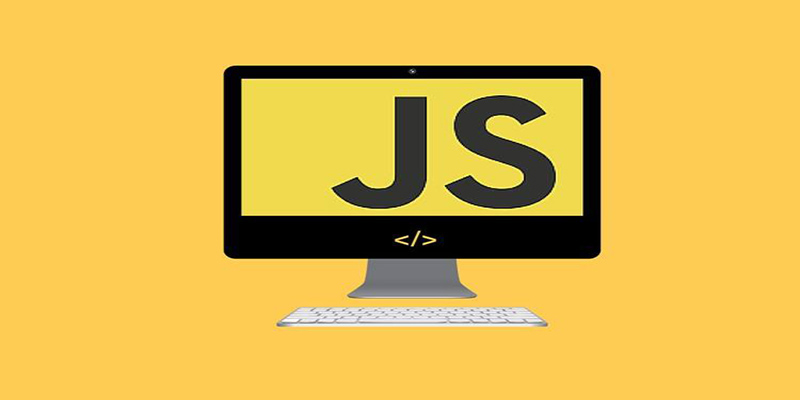本篇文章给大家带来了关于JavaScript视频教程的相关知识,其中主要介绍了关于箭头函数的相关问题,包括了语法规则、简写规则、常见应用等等内容,下面一起来看一下,希望对大家有帮助。

【相关推荐:JavaScript视频教程、web前端】
箭头函数
在ES6中新增了函数的简写方式----箭头函数,箭头函数的出现不仅简化了大量代码,也让代码看起来更加优雅,同时也解决了this指向问题,下面我们就来详细讲解如何玩转箭头函数。
语法规则
之前的方法
function foo1(){}var foo2 = function(name,age){
console.log("函数体代码",this,arguments);
console.log(name,age);}
箭头函数完整写法
var foo3 = (name,age) => {
console.log("箭头函数的函数体")
console.log(name,age);}
箭头函数遍历数组
- 曾经的写法
var names = ["abc","cba","nba"];names.forEach(function(item)){
console.log(item);})
- 箭头函数的写法
names.forEach((item,idx,arr)=>{
console.log(item,idx,arr);
} )

setTimeout(()=>{
console.log("setTimeout");},3000)
简写规则
如果箭头函数只有一个函数,那么()可以省略
name.forEach(item =>{console.log(item);}
- filter()配合箭头函数,可以高效的筛选出符合条件的数字。
var newNums = nus.filter(item =>{
return item % 2;})
如果函数体中只有一行执行代码,那么{} 可以省略.
- 并且这行代码的返回值会作为整个函数的返回值,所以不需要加 return
names.forEach(item => console.log(item));
- filter()函数在只有一行执行,可以直接省略{}
varans = worker.filter( item=>item % 2 )
如果默认返回值是一个对象,那么这个对象必须加()
注意:在react 的 redux 经常使用。
我们会发现当箭头函数 同时遇到 执行体的大括号和对象的大括号时,箭头函数无法区分
var arrFn = () =>{} //此大括号是执行体
var arrFn = () =>{ name : "why"}// 此大括号是对象
所以为了区别执行器,必须要给对象加()
var arrFn = () =>({ name : "why"})
常见应用
map
map() 方法定义在JS的Array中,它返回一个新的数组,数组中的元素为原始数组调用函数后处理的值。
值得注意的是:
- map()函数不会对空数组进行检测。
- map()函数不会改变原始数组,它形成的是一个新数组。
array.map(function(currentValue, index, arr), thisIndex)
参数说明:
- function(currentValue,index,arr):必填
- 数组中的每个元素都会执行这个函数。
- currentValue:必填,表示当前元素的值。
- index:可选,当前元素的索引也就是第几个数组元素。
- arr:可选,当前元素属于的数组对象。
- thisValue:可选,对象作为该执行回调时使用,传递给函数,用作“this”的值。
例1:对原数组进行平方后赋值给新数组。
let arry = [1,2,3,4];let newArray = array.map((item)=>{
return item*item;})
也可以化简成下面一行代码。
let newArray = array.map(item =>item * item)
例2:对原数组的偶数进行平方后赋值给新数组。
filter
filter() 用于对数组进行过滤。
- 原理是它创建一个新数组,新数组的元素是通过检查指定数组中符合条件的所有元素。
-
filter把传入的函数依次作用在每一个元素,然后根据返回值是true还是false决定保留还是丢弃元素。 Array.filter(function(currentValue, indedx, arr), thisValue)
参数说明:
- function(currentValue,index,arr):必填
- 数组中的每个元素都会执行这个函数。
- currentValue:必填,表示当前元素的值。
- index:可选,当前元素的索引也就是第几个数组元素。
- arr:可选,当前元素属于的数组对象。
- thisValue:可选,对象作为该执行回调时使用,传递给函数,用作“this”的值。
let newArray = array.filter(item=>item%2===0).map(item =>item * item)
例3:对原数组中的偶数下标进行平方后赋值给新数组。
let array = [1, 2, 3, 4]; let newArray = array.filter((item,idx)=>idx%2===0).map(item =>item * item)
例4:巧妙利用 arr 参数,给数组去重.
var newArray = array.filter((item,idx,arr)=>arr.indexOf(item) === idx)
例2:对原数组的偶数进行平方后求累加和。
reduce
- 用于遍历数组,可以设置初始值,大大增强了代码的可读性,同时还有一个参数可以做累计计算。
array.reduce((pre, cur, index, arr),init)
参数说明:
- function((pre, cur, index, arr)):必填
- pre: 必填,积累值
- cur: 必填。当前元素。
- index: 可选。当前下标。
- arr: 可选。当前数组。
- init: 可选。传递给函数的初始值,但传入参数为两个时,init 是累计值 pre的初始值。
如果reduce的参数只有一个,那么累计值的初始值是数组的第一个值。
如果reduce的参数有两个,那么积累值初始值就是设置好的 参数init初始值。
在每一次迭代中,返回的值都作为下一次迭代的 pre累计值。
var ans = arr.filter(item=>item%2).map(item=>item*item).reduce((x,y)=>x+y,0);
箭头函数中的this使用
普通函数中是有this的标识符
function foo(){
console.log("foo",this);}foo()//windowfoo.apply("aaa")//aaa
箭头函数中,压根没有this。
var bar = ()=>{console.log("bar",this)}bar()//windowbar.apply("AAA")//window
concat
concat()方法是用于连接两个或多个数组。
var arr = [1, 2, 3, 4]; var arr2 = [7, 8, 9, 10]; var ans = [].concat(arr,arr2); console.log(ans);//输出:(8) [1, 2, 3, 4, 7, 8, 9, 10]
this的查找规则
因为箭头函数中没有this的标识符,所以当箭头函数内部开始调用this时。
JavaScript引擎就从作用域由里到外的找含有this指向的作用域。
var obj ={
name:"obj",
foo:function(){
var bar = ()=>{
console.log("bar",this);
}
return bar;
}}
- 第一层 bar箭头函数:没有。
- 第二层 function 函数:指向obj。
所以例子中的 this 指向obj。
var obj ={
name:"obj",
foo:()=>{
var bar =()=>{
console.log("bar:",this);
}
return bar;
}}
- 第一层 bar箭头函数:没有。
- 第二层 foo箭头函数:没有。
- 第三层 全局作用域:指向window。
所以例子中的 this 指向window。
模拟网络发送请求
- 封装 request 工具函数
function request(url,callback){
var res = ["abc","cba","nba"];
callback(res);}
- 实际操作的位置
- 早期的写法
因为此时传入 request 的function ,就是 request 定义中的 callback()。
所以 function 中的参数就是 request 定义中的 res 数组,然后赋值给了 此对象中names
但因为 function 是个回调函数的this 的指向是 window,所以需要在外层的函数中,规定一个_this指向当前对象。
var _this = this;
然后 将获取过来的 res 数组 赋值给 _this 中的names
_this.name = [].concat(ans);
var obj = {
names:[],
network:function(){
var _this = this;
request("/names",function(ans){
_this.name = [].concat(ans);
})}
- 箭头函数的写法
因为箭头函数本身是没有 this的,js引擎会由内往外的找 this的指向。
发现 外层的 函数 this指向obj,于是 this 就指向了 obj。
var obj = {
names:[],
network:function(){
request("/names",(ans)=>{
this.name = [].concat(ans);
})}
【相关推荐:javascript视频教程、web前端】
以上是JavaScript怎么拿捏箭头函数的详细内容。更多信息请关注PHP中文网其他相关文章!
 从C/C到JavaScript:所有工作方式Apr 14, 2025 am 12:05 AM
从C/C到JavaScript:所有工作方式Apr 14, 2025 am 12:05 AM从C/C 转向JavaScript需要适应动态类型、垃圾回收和异步编程等特点。1)C/C 是静态类型语言,需手动管理内存,而JavaScript是动态类型,垃圾回收自动处理。2)C/C 需编译成机器码,JavaScript则为解释型语言。3)JavaScript引入闭包、原型链和Promise等概念,增强了灵活性和异步编程能力。
 JavaScript引擎:比较实施Apr 13, 2025 am 12:05 AM
JavaScript引擎:比较实施Apr 13, 2025 am 12:05 AM不同JavaScript引擎在解析和执行JavaScript代码时,效果会有所不同,因为每个引擎的实现原理和优化策略各有差异。1.词法分析:将源码转换为词法单元。2.语法分析:生成抽象语法树。3.优化和编译:通过JIT编译器生成机器码。4.执行:运行机器码。V8引擎通过即时编译和隐藏类优化,SpiderMonkey使用类型推断系统,导致在相同代码上的性能表现不同。
 超越浏览器:现实世界中的JavaScriptApr 12, 2025 am 12:06 AM
超越浏览器:现实世界中的JavaScriptApr 12, 2025 am 12:06 AMJavaScript在现实世界中的应用包括服务器端编程、移动应用开发和物联网控制:1.通过Node.js实现服务器端编程,适用于高并发请求处理。2.通过ReactNative进行移动应用开发,支持跨平台部署。3.通过Johnny-Five库用于物联网设备控制,适用于硬件交互。
 使用Next.js(后端集成)构建多租户SaaS应用程序Apr 11, 2025 am 08:23 AM
使用Next.js(后端集成)构建多租户SaaS应用程序Apr 11, 2025 am 08:23 AM我使用您的日常技术工具构建了功能性的多租户SaaS应用程序(一个Edtech应用程序),您可以做同样的事情。 首先,什么是多租户SaaS应用程序? 多租户SaaS应用程序可让您从唱歌中为多个客户提供服务
 如何使用Next.js(前端集成)构建多租户SaaS应用程序Apr 11, 2025 am 08:22 AM
如何使用Next.js(前端集成)构建多租户SaaS应用程序Apr 11, 2025 am 08:22 AM本文展示了与许可证确保的后端的前端集成,并使用Next.js构建功能性Edtech SaaS应用程序。 前端获取用户权限以控制UI的可见性并确保API要求遵守角色库
 JavaScript:探索网络语言的多功能性Apr 11, 2025 am 12:01 AM
JavaScript:探索网络语言的多功能性Apr 11, 2025 am 12:01 AMJavaScript是现代Web开发的核心语言,因其多样性和灵活性而广泛应用。1)前端开发:通过DOM操作和现代框架(如React、Vue.js、Angular)构建动态网页和单页面应用。2)服务器端开发:Node.js利用非阻塞I/O模型处理高并发和实时应用。3)移动和桌面应用开发:通过ReactNative和Electron实现跨平台开发,提高开发效率。
 JavaScript的演变:当前的趋势和未来前景Apr 10, 2025 am 09:33 AM
JavaScript的演变:当前的趋势和未来前景Apr 10, 2025 am 09:33 AMJavaScript的最新趋势包括TypeScript的崛起、现代框架和库的流行以及WebAssembly的应用。未来前景涵盖更强大的类型系统、服务器端JavaScript的发展、人工智能和机器学习的扩展以及物联网和边缘计算的潜力。
 神秘的JavaScript:它的作用以及为什么重要Apr 09, 2025 am 12:07 AM
神秘的JavaScript:它的作用以及为什么重要Apr 09, 2025 am 12:07 AMJavaScript是现代Web开发的基石,它的主要功能包括事件驱动编程、动态内容生成和异步编程。1)事件驱动编程允许网页根据用户操作动态变化。2)动态内容生成使得页面内容可以根据条件调整。3)异步编程确保用户界面不被阻塞。JavaScript广泛应用于网页交互、单页面应用和服务器端开发,极大地提升了用户体验和跨平台开发的灵活性。


热AI工具

Undresser.AI Undress
人工智能驱动的应用程序,用于创建逼真的裸体照片

AI Clothes Remover
用于从照片中去除衣服的在线人工智能工具。

Undress AI Tool
免费脱衣服图片

Clothoff.io
AI脱衣机

AI Hentai Generator
免费生成ai无尽的。

热门文章

热工具

VSCode Windows 64位 下载
微软推出的免费、功能强大的一款IDE编辑器

Dreamweaver CS6
视觉化网页开发工具

WebStorm Mac版
好用的JavaScript开发工具

安全考试浏览器
Safe Exam Browser是一个安全的浏览器环境,用于安全地进行在线考试。该软件将任何计算机变成一个安全的工作站。它控制对任何实用工具的访问,并防止学生使用未经授权的资源。

禅工作室 13.0.1
功能强大的PHP集成开发环境






